Vuelta a Espana and Worlds remain in Nibali's plans after Tour de France crash
Italian will have 15 days off the bike due to fractured T10 vertebra
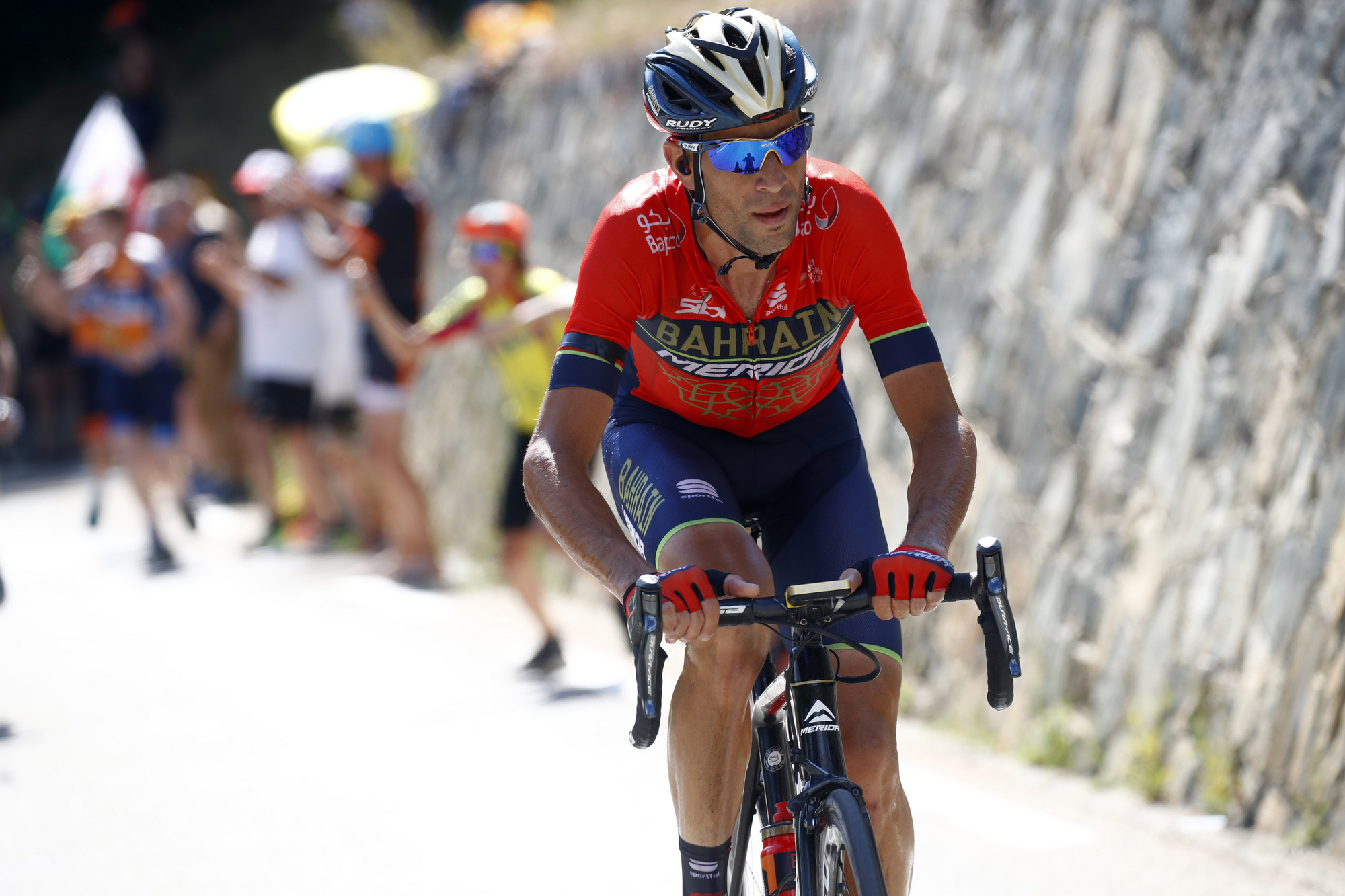
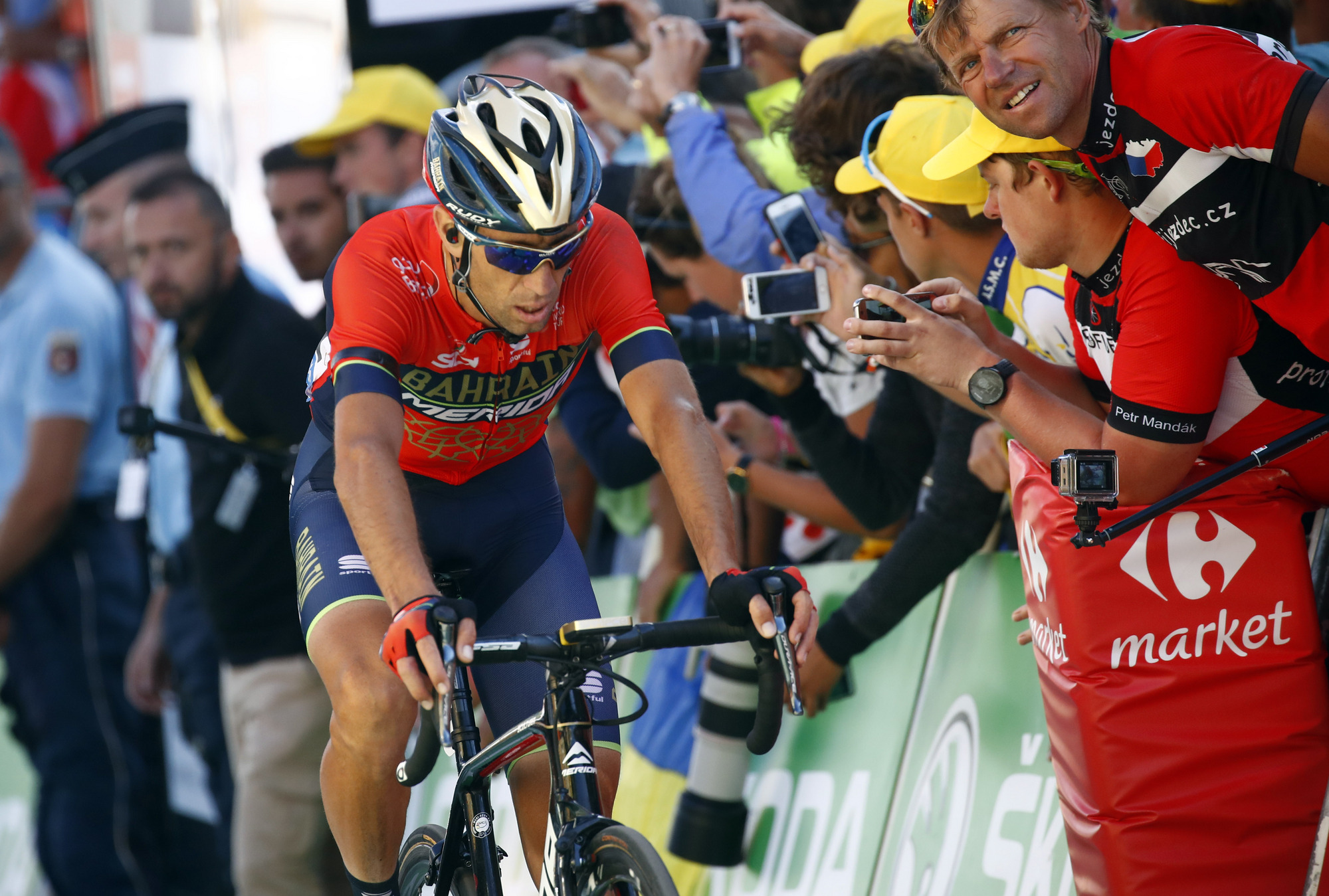
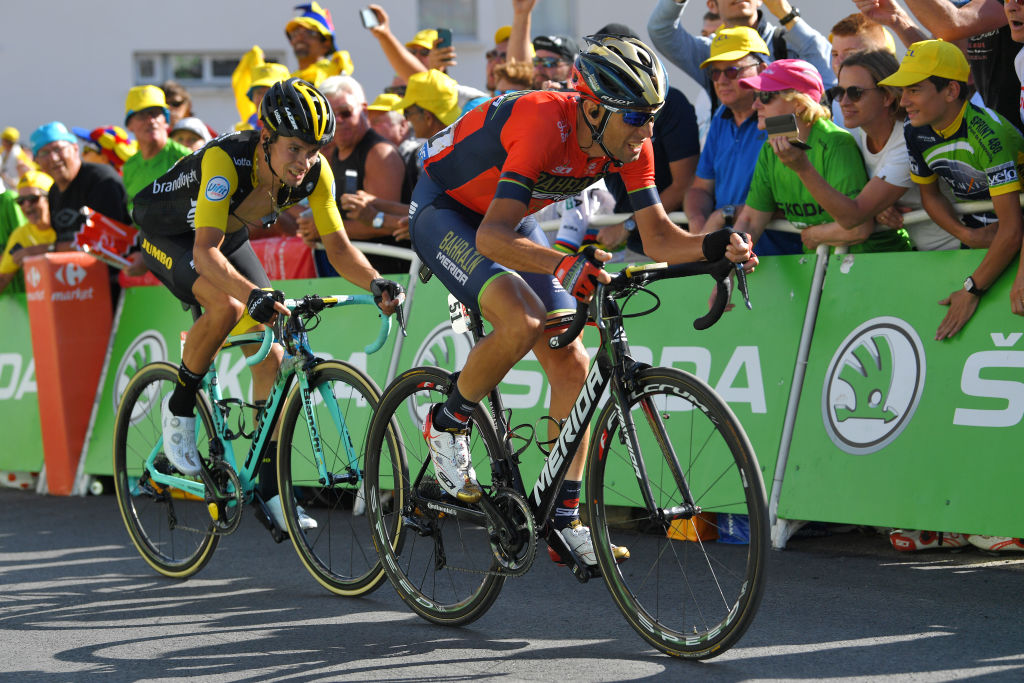
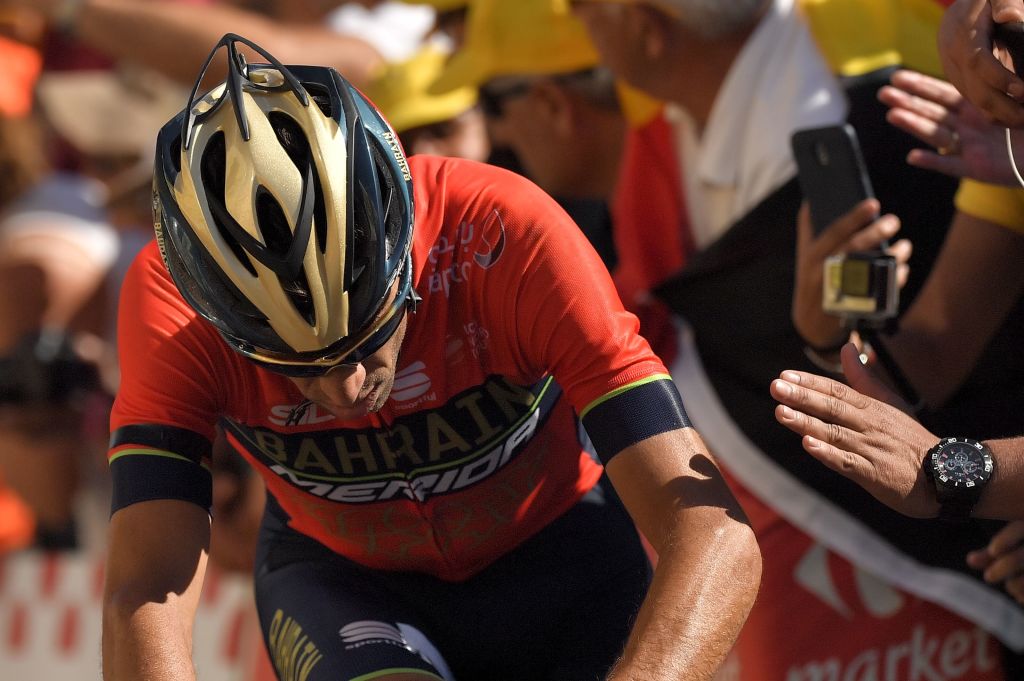
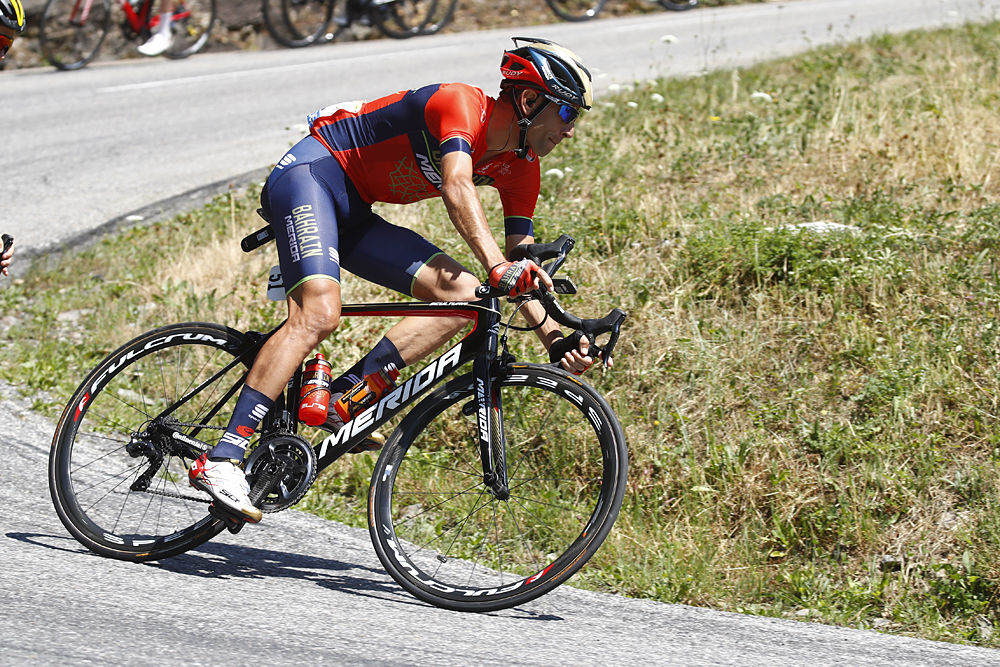
Shortly after 11pm on Thursday night, Tour de France director Christian Prudhomme was waiting outside the door of the Hôtel Club MMV Les Bergers on Alpe d’Huez when the medical van carrying Vincenzo Nibali (Bahrain-Merida) returned from the hospital in Grenoble.
By that point, it had already been confirmed that Nibali had fractured his T10 vertebra after a fan caused him to crash four kilometres from the summit of Alpe d’Huez. His Tour de France was over. His 19th Grand Tour participation ended with his first abandon.
“I have a lot of respect for you. I am sorry, so sorry,” Prudhomme said as he leant into the van and took Nibali’s hand. “Thanks for everything you have done for cycling. I’m really sorry it’s ended like this.”
Nibali, still wearing his kit more than five hours after the stage had finished, smiled wanly as he stepped out of the van. “That’s the race, these are things that happen,” Nibali said softly, and then looked to draw some levity from his doleful situation. “My daughter will be very happy to see me. And I haven’t done myself too much damage. Grazie.”
The Tour waits for no man, not even a former champion. On Friday morning, Nibali’s Bahrain-Merida team set about preparing for the start of stage 13 in Bourg d’Oisans at the foot of the Alpe. Business as usual, even if the downbeat atmosphere was anything but.
Nibali’s coach and confidant Paolo Slongo had driven behind the medical van to Grenoble on Thursday evening, and was at first reluctant to speak to reporters on Friday morning, the emotions of the occasion still raw. He confirmed, however, that Nibali’s injury would not prevent him from riding the Vuelta a España in preparation for the World Championships in Innsbruck, as previously announced.
“The Vuelta and Worlds were in our plans, and those plans remain the same,” Slongo said. “Vincenzo will have further checks when he goes home but from the diagnosis we’ve got, he’ll only have 15 days off the bike. If there aren’t complications, then he’ll be back to ride the Vuelta and the Worlds as planned.”
Get The Leadout Newsletter
The latest race content, interviews, features, reviews and expert buying guides, direct to your inbox!
Nibali’s crash was not captured by live television coverage, and it was initially suspected that the incident had been caused by police motorbikes slowing in front of him. Footage shot by fans on the roadside later suggested that Nibali had fallen after his bike was hooked by the strap of a spectator’s camera.
“I don’t know what happened and I don’t want to get into the specifics of it. I saw the videos that were floating around last night. There were people coming onto the road, and the barriers maybe weren’t doing much to stop them,” Slongo said. “We invested a lot of time in the Tour de France and to go home in this manner is very sad.”
Flares
Despite his crash, Nibali reached the summit of Alpe d’Huez in 7th place on the stage, just 13 seconds down on winner and yellow jersey Geraint Thomas (Team Sky). He was 4th overall at the time of his abandon, 2:37 behind the Welshman.
Speaking immediately after the finish at Alpe d’Huez, Nibali was sanguine about the incident, and even after learning that the crash had brought his Tour to an end, he refused to enter into any polemic about security measures on the mountainside. Bahrain-Merida directeur sportif Gorazd Stangelj paid tribute to his stoicism.
“We can learn a lot from Vincenzo because he accepted the situation with a lot of calm,” Stangelj told Cyclingnews. “He always thinks before he says anything, and that’s what he did yesterday too. He was aware of what happened, but he didn’t make a big drama of it.”
Stangelj lodged a formal appeal with the commissaires after stage 12, requesting that Nibali be awarded the same time as the front group. Bahrain-Merida cited the precedent seemingly established when Chris Froome (Team Sky) was brought down by a motorbike on Mont Ventoux in 2016, but the jury declined to amend the classification.
“In the end, they watched the film and they decided they didn’t want to create a precedent,” Slongo said. “But it was still a great performance from Vincenzo. He was 40 seconds down when he got back up, and he got to the finish only 13 seconds down.”
At the point Nibali crashed, the road was clouded by the smoke from a flare, and his teammate Sonny Colbrelli called for the practice of releasing flares on the roadside to be prohibited altogether. The Italian is mindful, however, of the difficulties of enforcing such a rule. The ban on the sale of alcohol on the slopes of the Alpe on Thursday, for instance, did little to protect riders from misguided help from drunken fans.
“They still bring beers with them and there were plenty of them drunk yesterday. They don’t even realise it, but yesterday two or three of them gave me pushes and it hurt me because of the wounds from my crash earlier in the Tour,” Colbrelli told Cyclingnews.
“They need to ban flares, because people are already out in the middle of the road. If they’re lighting those things as well, then you really can’t see anything, and you can end up riding into someone or something.”

Barry Ryan was Head of Features at Cyclingnews. He has covered professional cycling since 2010, reporting from the Tour de France, Giro d’Italia and events from Argentina to Japan. His writing has appeared in The Independent, Procycling and Cycling Plus. He is the author of The Ascent: Sean Kelly, Stephen Roche and the Rise of Irish Cycling’s Golden Generation, published by Gill Books.